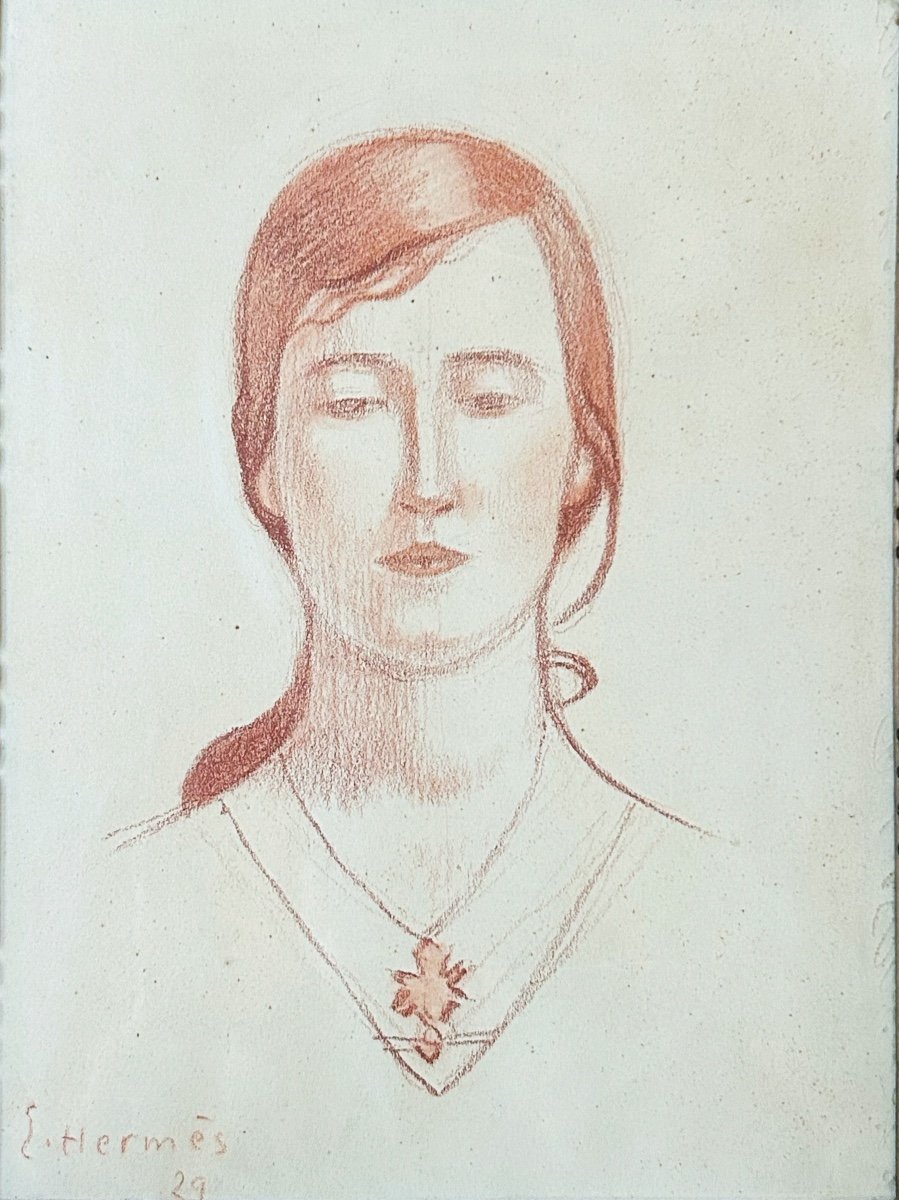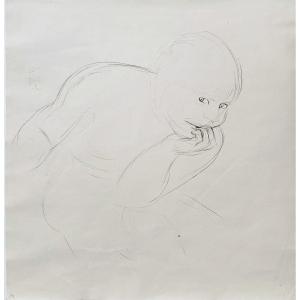Portrait of a woman, 1929
Sanguine on paper
Signed “E. Hermès” and dated “29” at the bottom left
29.5 x 22.5 cm
sold in its original frame
Genevan artist of German origin, Erich Hermès was born in Ludwigshafen-am-Rhein in 1881 to Huguenot parents. He initially trained as a painter-decorator before joining the Geneva School of Fine Arts. Winner of a scholarship awarded by the Confederation, he made his first stay in Paris in 1909 before completing his training in Munich then in Italy and Spain.
Erich Hermès is one of the important figures of Genevan figurative painting of the first half of the 20th century. He created numerous monumental works integrated into architecture. They adorn official and sacred public buildings such as the Protestant temple of Carouge but also private buildings. The easel painting of his young years is strongly marked by the work of Ferdinand Hodler (1853-1918) met around 1903. Like his elder, he painted Switzerland and its heroic figures and battles while maintaining a strong empathy for the little people. He later switched to the New Objectivity, developing a more personal style.
The artist is also recognized in the world of graphic arts and more particularly for his work as a poster designer in the 1930s and 1940s. He thus puts his art at the service of promoting the Alps and winter sports but also of products such as wine or cigars.
The portrait of a woman in red chalk that we present is dated 1929. It seems that we find the physiognomy of the model in some of the artist's paintings representing intimate subjects. Our figure which wears a Huguenot cross around its neck, a Protestant symbol, could thus be a person evolving in the private sphere of Erich Hermès.



































 Le Magazine de PROANTIC
Le Magazine de PROANTIC TRÉSORS Magazine
TRÉSORS Magazine Rivista Artiquariato
Rivista Artiquariato